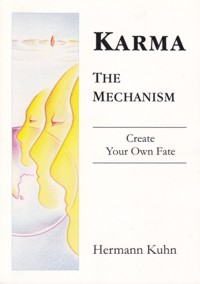The Tattvarthasutra describes 14 stages (gunasthanas) human beings experience while striving for freedom from all karmic limitations. Each stage is characterized by the type of karma manifesting therein (what kind of emotions we feel, how intense they are and what types of action we experience as a result), the time we stay in one particular stage, the direction in which we pass through and how much our personal development is stimulated. Because of these differing factors each stage has a unique feeling and significance.
Our consciousness can be compared to a multi-story palace. The higher the floor, the more we see of the surrounding scenery. On the roof we have full view of the entire panorama and also unobstructed access to the sky. In the present situation of the world almost all people live in the basement that has no windows to the outside. Yet everyone is fully capable of living on any of the higher floors as well. The main reason for this restriction is that we don't know that higher levels exist.
This classification therefore enables us to identify our own present stage of development. Once we know its features and mechanisms, we are able to close all themes of life - dissolve all types of karma - that restrict us to our current level. We thus prevent wasting time and energy on efforts that would succeed only on higher levels.
Yet far more interesting is the fact that we often experience brief insights into 'higher' stages - irrespective of the level we presently focus on. Though the duration of these insights may be very short, they offer us a taste how higher levels feel like. These insights - however brief they may appear - prove vividly that we are capable of experiencing the higher stages. They tell us that it is well within our ability to reach entirely different layers of our consciousness and that we - only by re-directing our attention and energy - are capable of developing them into a permanent foundation of our life now.
Knowing the characteristics and mechanisms of the different gunasthanas enables us to identify what level opened up when we have insights into higher stages.
In contrast to other systems of development the 14 gunasthanas are not 'climbed' sequentially one after the other. We do not have to 'complete' one level first before we can progress to a higher one. The Tattvarthasutra describes an interconnected, complex structure that makes dynamic moves between distant stages an essential feature of our development. The insights we obtain this way give us an immense incentive to wind up the themes of the lower levels so we can turn our attention towards exploring the far more fascinating higher stages.
We nevertheless should not judge higher stages as fundamentally 'better' than lower ones. In the end it is the experience of all stages that makes up the fabric of our character we are building during bodily manifestations. While on a higher stage we might well decide that the - temporary - experience of a lower stage would be essential for our development and then consciously immerse ourselves into the greater emotional density and lesser comprehension of the lower stage for that very purpose.
Once we fundamentally understand how our consciousness unfolds, we never discount anyone who presently experiences a denser stage. We only feel profound compassion and appreciation for his or her particular path.
Only two gunasthanas (no. 1 and 4) permit an indefinite duration of stay. All other stages last for only a limited time. This structure gives the gunasthanas an intrinsic dynamism that coaxes us to gain freedom from all obstructions that restrict the full unfoldment of our consciousness.
 Hermann Kuhn
Hermann Kuhn
